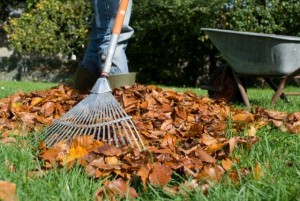With the beautiful season of autumn quickly approaching, here are a few simple tips that will prepare your lawn for a long winter.
Just as bears go into hibernation, so does your lawn. Contrary to what you might think, lawns need just as much care in the fall as in spring and summer. During the fall your lawn is preparing to go dormant during winter. It is working hard to absorb nutrients, moisture, and energy. Follow these six simple steps and you will appreciate the results next spring.
Mow On. Just because it’s cooling off doesn’t mean you should stop mowing. Towards the end of fall, drop the mower’s blade to its lowest setting. This will allow the grass to absorb more sunlight and decrease the chances of the grass turning brown during the winter. Also, make sure you are continuing to water in the evenings as needed.
Rake those leaves. This is a great chore for your children. Raking leaves will help prevent your grass from dying. Dead leaves left on the lawn absorb rain and morning dew, which suffocates your lawn. The longer the leaves are left on your lawn, the higher the chances are that it will kill your grass or grow fungal diseases.
Aerate your soil. Your lawn needs to stock up on resources before winter. Aerating in the fall allows more nutrients to be absorbed and stored.
Apply Top Dressing. After raking and aerating your lawn, apply a thin layer of soil, or top dressing, over your lawn. This will help even out the terrain and reduce the need for supplemental fertilizer.
Don’t let your grass go bald. You can fix bald spots before they become obvious eyesores in the spring. Use all-in-one lawn repair mixture to quickly fix them. You can find the lawn repair mixture at most home and garden stores.
Lastly, don’t get caught in the weeds. Did you know weeds also absorb the most nutrients during fall? They will steal all the resources from your grass and continue to grow out of control. Be sure to use some form of weed deterrent or herbicide consistently until temperatures drop below 60 degrees Fahrenheit.







